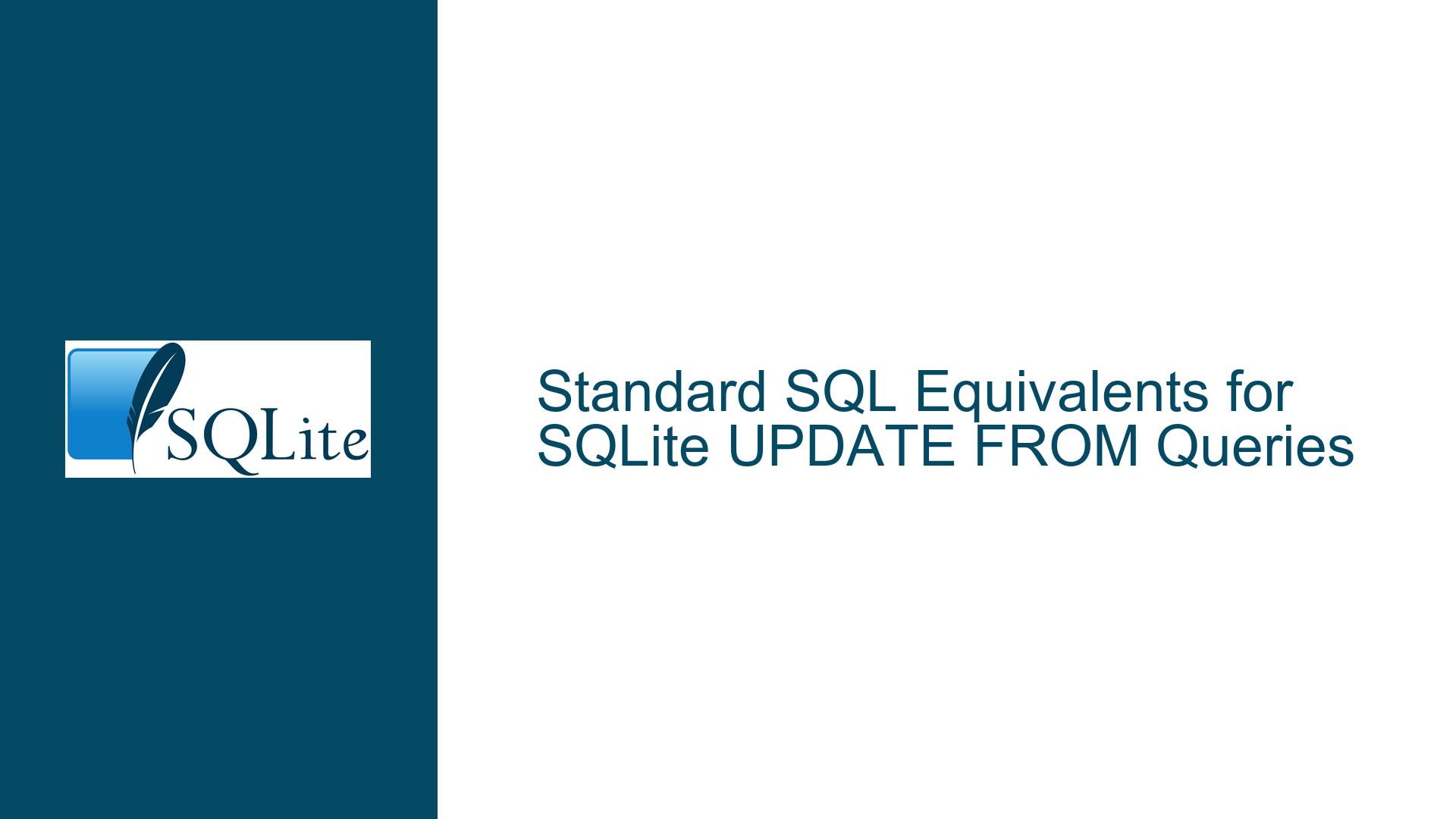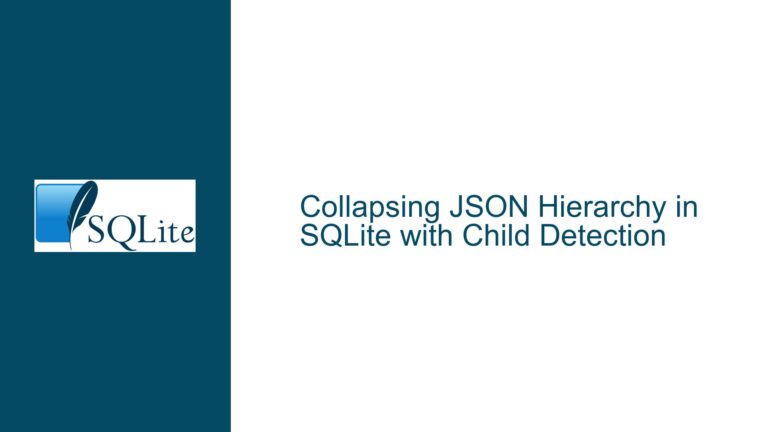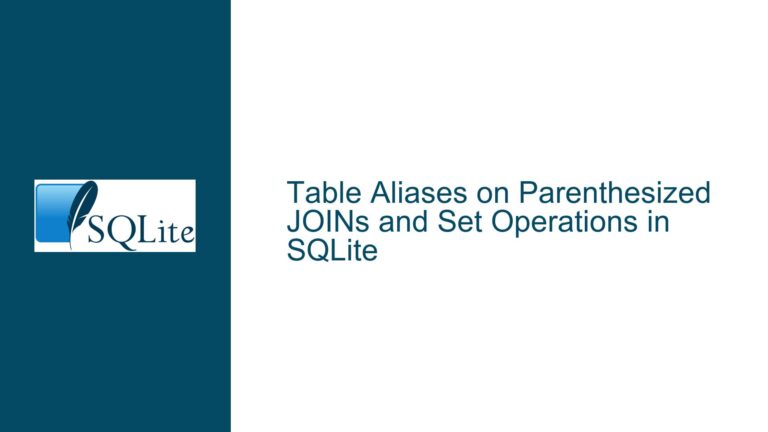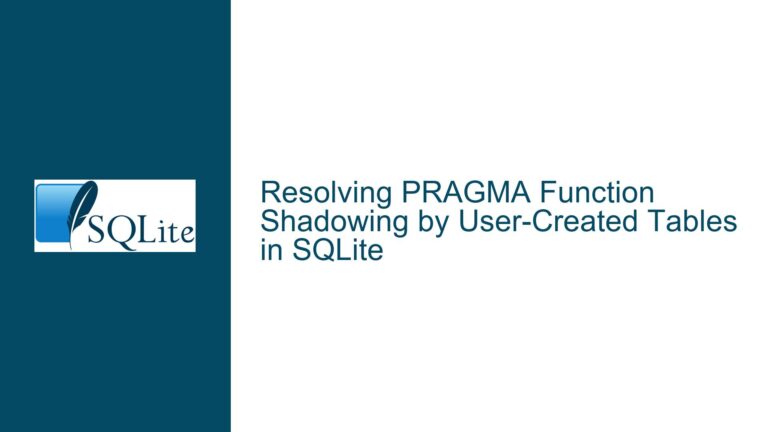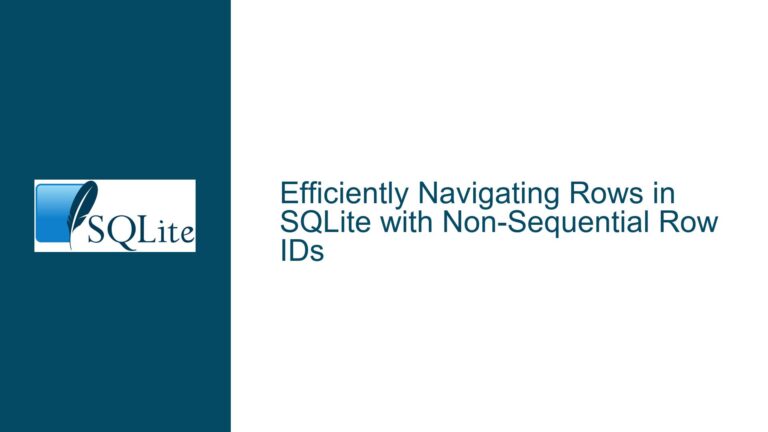Standard SQL Equivalents for SQLite UPDATE FROM Queries
Understanding UPDATE FROM Syntax Variations Across SQL Dialects
The foundational challenge in translating SQLite’s UPDATE FROM syntax to other relational database management systems (RDBMS) stems from the absence of a universally standardized approach for performing updates that involve data from secondary tables. SQLite implements a specific interpretation of the UPDATE FROM clause that differs from implementations in systems like PostgreSQL, MySQL, or Microsoft SQL Server.
In the example provided:
UPDATE inventory
SET quantity = quantity - daily.amt
FROM (SELECT sum(quantity) AS amt, itemId FROM sales GROUP BY 2) AS daily
WHERE inventory.itemId = daily.itemId;
SQLite implicitly joins the inventory table (the update target) with the derived table daily. This behavior contrasts with other RDBMS that require explicit declaration of the target table in the FROM clause or use alternative syntax structures. For instance, PostgreSQL permits a similar UPDATE FROM structure but treats the FROM clause as a separate join context, while MySQL lacks direct UPDATE FROM support and relies on multi-table UPDATE syntax with explicit joins.
The ambiguity arises because SQLite’s parser automatically associates the target table (inventory) with the FROM clause’s derived table (daily), eliminating the need to re-specify the target table in the join. Other systems interpret the FROM clause as an independent join space, requiring explicit inclusion of the target table. This discrepancy leads to syntax errors or logical mismatches when migrating queries between RDBMS.
Identifying Ambiguity and Cross-RDBMS Compatibility Challenges in UPDATE Queries
The primary technical hurdles in achieving cross-RDBMS compatibility for UPDATE FROM-style operations fall into three categories:
Column Reference Ambiguity:
When theSETclause references columns present in both the target table and the joined table without explicit qualification, the SQL parser cannot resolve the column ownership. For example, in the original query,quantityis a column in bothinventoryanddaily(due to thesum(quantity)alias). SQLite initially throws an error here because it cannot determine whetherquantityrefers toinventory.quantityordaily.quantity.Divergent JOIN Semantics:
SQLite’sUPDATE FROMtreats the target table as implicitly joined, whereas systems like PostgreSQL require explicit joins. Consider this modified example for PostgreSQL:UPDATE inventory SET quantity = inventory.quantity - daily.amt FROM (SELECT sum(quantity) AS amt, itemId FROM sales GROUP BY itemId) AS daily WHERE inventory.itemId = daily.itemId;Here,
inventorymust be explicitly referenced in theFROMclause for the join to resolve correctly. Failure to do so results in syntax errors or unintended Cartesian products.GROUP BY Clause Portability:
The use ofGROUP BY 2(referencing the second column in theSELECTlist) is non-standard and not portable. Standard SQL requiresGROUP BYto reference column names or expressions, not ordinal positions. Systems like MySQL or Oracle will rejectGROUP BY 2, necessitating a rewrite toGROUP BY itemId.
These issues compound when aiming for a single query that works across multiple RDBMS. The absence of a universal UPDATE FROM standard forces developers to write dialect-specific code or adopt workarounds that sacrifice performance for portability.
Strategies for Writing Portable and Unambiguous UPDATE FROM Statements
To achieve cross-RDBMS compatibility while maintaining clarity and efficiency, consider the following approaches:
1. Explicit Column Qualification
Always prefix column names in the SET and WHERE clauses with the target table’s alias to resolve ambiguity. For example:
UPDATE inventory
SET quantity = inventory.quantity - daily.amt
FROM (SELECT sum(quantity) AS amt, itemId FROM sales GROUP BY itemId) AS daily
WHERE inventory.itemId = daily.itemId;
This modification ensures that the quantity column is explicitly tied to inventory, eliminating parser confusion. This syntax works in SQLite and PostgreSQL but may fail in MySQL, which does not support UPDATE FROM.
2. Standard-Compliant JOIN Syntax
Use ANSI-standard JOIN syntax within the UPDATE statement where supported. For MySQL, which lacks UPDATE FROM, rewrite the query using a multi-table UPDATE:
UPDATE inventory
INNER JOIN (SELECT itemId, sum(quantity) AS amt FROM sales GROUP BY itemId) AS daily
ON inventory.itemId = daily.itemId
SET inventory.quantity = inventory.quantity - daily.amt;
This structure is portable to MySQL and MariaDB but requires adjustment for SQLite, which does not support JOIN in UPDATE statements.
3. Common Table Expressions (CTEs) for Clarity
Leverage CTEs to isolate the derived table logic, enhancing readability and maintainability:
WITH daily AS (
SELECT itemId, sum(quantity) AS amt
FROM sales
GROUP BY itemId
)
UPDATE inventory
SET quantity = inventory.quantity - daily.amt
FROM daily
WHERE inventory.itemId = daily.itemId;
While CTEs improve structure, their compatibility varies. SQLite and PostgreSQL handle this gracefully, but older MySQL versions (before 8.0) do not support CTEs in UPDATE statements.
4. RDBMS-Specific Query Branching
For applications targeting multiple RDBMS, dynamically generate SQL based on the detected database engine. For example:
- SQLite/PostgreSQL:
UPDATE inventory SET quantity = inventory.quantity - daily.amt FROM (SELECT itemId, sum(quantity) AS amt FROM sales GROUP BY itemId) AS daily WHERE inventory.itemId = daily.itemId; - MySQL/MariaDB:
UPDATE inventory INNER JOIN (SELECT itemId, sum(quantity) AS amt FROM sales GROUP BY itemId) AS daily ON inventory.itemId = daily.itemId SET inventory.quantity = inventory.quantity - daily.amt; - Microsoft SQL Server:
UPDATE inventory SET quantity = inventory.quantity - daily.amt FROM inventory INNER JOIN (SELECT itemId, sum(quantity) AS amt FROM sales GROUP BY itemId) AS daily ON inventory.itemId = daily.itemId;
5. Embrace the MERGE Statement (Where Supported)
The SQL:2003-standard MERGE statement (upsert) can sometimes replace UPDATE FROM logic:
MERGE INTO inventory
USING (SELECT itemId, sum(quantity) AS amt FROM sales GROUP BY itemId) AS daily
ON inventory.itemId = daily.itemId
WHEN MATCHED THEN
UPDATE SET quantity = inventory.quantity - daily.amt;
However, SQLite does not support MERGE, and MySQL’s implementation (INSERT ... ON DUPLICATE KEY UPDATE) differs significantly. Use this approach only if targeting systems like Oracle, PostgreSQL, or SQL Server.
6. Subquery Correlation for Single-Row Updates
For scenarios where the derived table returns one row per target row, use a correlated subquery:
UPDATE inventory
SET quantity = quantity - (
SELECT sum(quantity)
FROM sales
WHERE sales.itemId = inventory.itemId
);
This method is highly portable but inefficient for large datasets due to potential row-by-row execution.
Final Recommendations
- Qualify all column references to avoid ambiguity.
- Use standard
GROUP BYcolumn names instead of ordinal positions. - Test queries across all target RDBMS during development.
- Abstract SQL generation in application code to handle dialect differences.
By adopting these strategies, developers can mitigate the fragmentation in SQL dialects while maintaining the flexibility to optimize for specific RDBMS when necessary.
